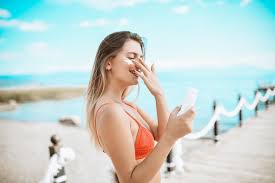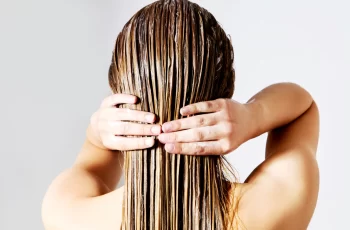(Often Forgotten) Body Parts That Are Still Prone to Sunburn
We’ve all done it. After a long day in the sun, we’ve stood in front of the mirror and groaned loudly/oops when we saw the red spots that popped up after a hot shower at the beach.
Whether you didn’t apply enough sunscreen the first time, neglected to reapply regularly throughout the day, or just “forgot” about harmful UV rays, here’s a list of the most often forgotten body parts that are still prone to sunburn (and it hurts when they burn themselves).
Scalp
Like the rest of your body’s skin, the top of your head is susceptible to sun damage. If you don’t wear a hat, why not? Second, no, your luscious hair isn’t enough to protect your scalp from sunburn. Take a small amount of facial sunscreen and apply it to the sections of your hair. If you’re bald, just lather it all over your skull.
Ears
Those things that stick out on the side of your head, yes, that’s right there. Just a reminder that your ears are exposed to the sun when you’re walking, driving, or working at a desk near a window. So start by applying your daily sunscreen to the edges, including your ears, chin, neck, and scalp.
Eyelids
Are you keeping your eyes protected? It sounds novel, but without a wide-brimmed hat, sunglasses, and a layer of sunscreen, you’re practically begging our (bad) friends UVA and UVB to come and burn you. Our eyelids are also very sensitive. Even though a sunburn stings the area, we recommend being careful when applying sunscreen as well.
Lips
For some reason, we focus mostly on our cheeks, noses, and foreheads, and forget about our lips, which are actually made up of highly sensitive tissue. The skin on our lips is very thin, which means it’s much more fragile than the rest of our body and highly susceptible to skin cancer if repeatedly damaged. It’s time to invest in a good lip balm with SPF right away!
Hands
You’ve already applied sunscreen to your arms, but have you ever made it all the way to your fingertips? Don’t lie… the backs of our hands are just as susceptible to sunburn as the rest of our long limbs, and are often one of the first areas of the body to show signs of aging (freckles, sunspots, prominent veins, wrinkles, sagging skin).
Feet
Your feet don’t see the sun for months (thank you, winter), and then suddenly you’re wearing sandals to the office and walking barefoot from the beach to the bar on Saturdays. The tops of our feet need some protection, too, if you want to avoid the peeling, Birkenstock-like feeling of a suntan.
Behind the Knees
If you’re someone who allocates SPF to the top of your legs first, then the bottom, you know it’s easy to forget about the back of your knees in the middle. Not to mention, this part of our bodies tends to sweat a lot, so the sunscreen you apply is likely to be removed and/or rubbed off faster. There’s nothing worse than getting a bad sunburn in those crooked creases! This makes walking, working out, and sitting at your desk that much more uncomfortable. You’ve been warned.
Armpits
You’re lying on your back with a sweet summer novel spread over your head, and suddenly your soft armpits are completely exposed to the harsh sun. We’ll be the first to admit, there’s no sunscreen habit here (we recommend applying sunscreen before deodorant so your skin has time to absorb the product), but every whiff of a possible sunburn makes us anxious.
DQH Can I use salicylic acid first and then vitamin C?
It’s easy to create a skincare routine, but knowing how to use it is another thing entirely. In most cases, if you’re not getting the desired skin results, it could be due to the layering of conflicting ingredients. So, is it possible that salicylic acid and vitamin C are such ingredients? Or are these active ingredients the duo that’s been missing from your skincare routine? If you want answers, stick around because today we are going to explain the benefits of salicylic acid and vitamin C and how they can be used in your daily life.
What are the benefits of salicylic acid for skin?
Salicylic acid is one of the most commonly used beta hydroxy acids and is favored by many people with oily, acne-prone skin. This acid is derived from willow bark, and unlike its water-soluble relatives (called alpha-hydroxy acids), salicylic acid is oil-soluble, which means it can penetrate deeper into the lower layers of the skin. Once it reaches the lower layers, it can help unclog pores of excess sebum, dirt, bacteria, debris, and impurities. This results in clearer skin tones and greater definition.
Not only does salicylic acid benefit the underlying layers, but the outer surface of the skin benefits as well. When applied to the skin, salicylic acid removes the buildup of dead skin cells. This is accomplished by breaking the bonds that hold dead cells to the surface. Over time, this can cause the complexion to look dull and prone to acne, blackheads, and other blemishes.
If you’d like to learn more about salicylic acid and how it can improve your skin, check out this dedicated blog post from a beauty insider.
What are the benefits of vitamin C for skin?
Vitamin C is considered one of the most powerful antioxidants, which means it is very effective at fighting free radicals and preventing them from causing further skin damage. Examples of free radicals include pollution, central heating, UV rays and harsh climate. They attack proteins, fats and cell membranes as soon as they come into contact with the skin, causing signs of premature aging such as fine lines and wrinkles as well as hyperpigmentation, flaky patches of skin and loss of elasticity.
Many people usually prefer to use vitamin C in their morning routine as this ingredient gives the complexion a radiant glow. You’ll also find that vitamin C can target areas of hyperpigmentation, plumping the skin and reducing the appearance of fine lines and wrinkles.
The thing about vitamin C is that there are a lot of outdated studies going back to the 1950s that describe vitamin C as an unstable skin component. Thanks to improvements in modern technology, this is no longer the case as all products now contain a stable form of vitamin C.
Visit The Beauty Insider to learn more about vitamin C. So please check out our blog post.
Can I use salicylic acid first and then vitamin C?
Yes, you absolutely can. In fact, it’s thought that using salicylic acid before using vitamin C ensures it penetrates faster and works faster.
This is an efficient way to utilize two power sources, and the reason has to do with pH. For example, the skin’s natural pH is about 4.7, making it slightly acidic. Salicylic acid and vitamin C are also both acidic, and you’ll find that vitamin C is absorbed quickly into the skin. Therefore, using salicylic acid beforehand can increase the acidity of the skin and allow vitamin C to penetrate into the skin faster.
While this is considered an effective way to combine two powerful ingredients, you need to be aware of your skin type and how it reacts to certain active ingredients. Even people with perfect, normal skin can experience skin sensitivity and irritation. Therefore, always consult a doctor or dermatologist before using any new products on your skin.
It’s also important to follow skin application rules. In this case, you need to use the product correctly to ensure you get the best results for your skin. If you’re not sure what I mean, the basic rule for skin is to start with the thinnest consistency and work your way up to the thickest consistency. This prevents a barrier from forming on the surface, preventing other active ingredients from penetrating the skin.
Can I use salicylic acid at night and vitamin C in the morning?
Yes, absolutely, this is considered the most effective way to get returns without any adverse side effects. This is because there is enough time between applications to ensure that the skin’s pH levels return to balance.
You’ll also find that Vitamin C is rich in antioxidants and is perfect for use in the morning to ensure your skin is protected and looking its healthiest. Due to the small size of salicylic acid molecules, it is an acid that is able to reach the deepest parts of the skin. While this is effective at keeping skin clear, it also increases the risk of irritation and photosensitivity. Therefore, many people prefer to use powerful BHAs in their evening routine without exposure to UV rays, pollution, or harsh weather.
Warning: If you avoid using sunscreen every day, none of these ingredients will do what your skin needs. The combination of chemical peels and powerful ingredients increases the risk of further damage to the skin’s surface. Use SPF 50 every day to keep your skin protected and your lipid barrier healthy, even on cloudy days, keeping your skin in top condition.



